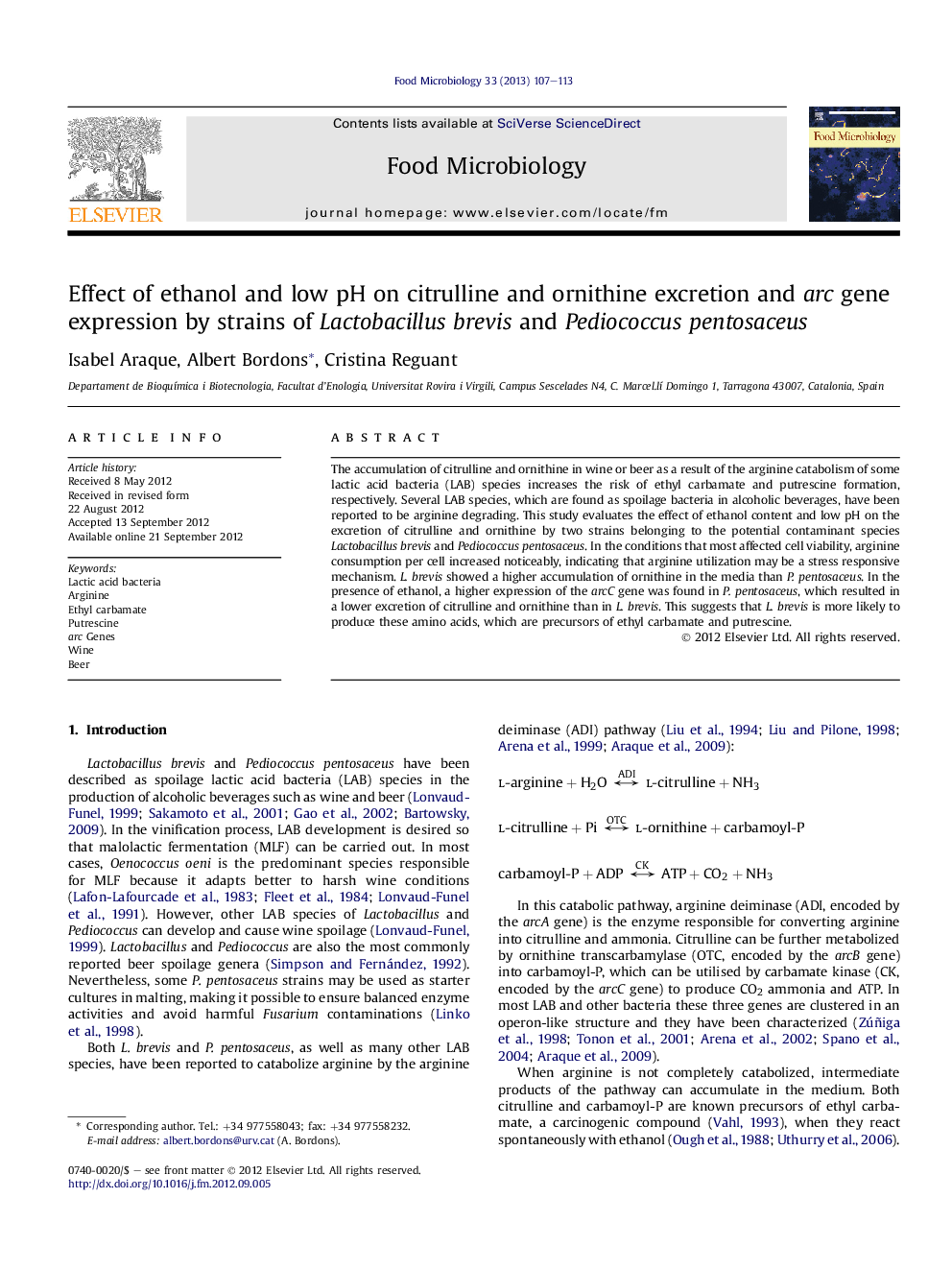| کد مقاله | کد نشریه | سال انتشار | مقاله انگلیسی | نسخه تمام متن |
|---|---|---|---|---|
| 4362980 | 1301529 | 2013 | 7 صفحه PDF | دانلود رایگان |

The accumulation of citrulline and ornithine in wine or beer as a result of the arginine catabolism of some lactic acid bacteria (LAB) species increases the risk of ethyl carbamate and putrescine formation, respectively. Several LAB species, which are found as spoilage bacteria in alcoholic beverages, have been reported to be arginine degrading. This study evaluates the effect of ethanol content and low pH on the excretion of citrulline and ornithine by two strains belonging to the potential contaminant species Lactobacillus brevis and Pediococcus pentosaceus. In the conditions that most affected cell viability, arginine consumption per cell increased noticeably, indicating that arginine utilization may be a stress responsive mechanism. L. brevis showed a higher accumulation of ornithine in the media than P. pentosaceus. In the presence of ethanol, a higher expression of the arcC gene was found in P. pentosaceus, which resulted in a lower excretion of citrulline and ornithine than in L. brevis. This suggests that L. brevis is more likely to produce these amino acids, which are precursors of ethyl carbamate and putrescine.
► Consumption of arginine by Lactobacillus brevis and Pediococcus pentosaceus increased with ethanol.
► L. brevis showed a higher accumulation of ornithine than P. pentosaceus.
► A higher expression of the arcC gene was found in P. pentosaceus.
► L. brevis is more likely to accumulate the precursors of ethyl carbamate and putrescine.
Journal: Food Microbiology - Volume 33, Issue 1, February 2013, Pages 107–113